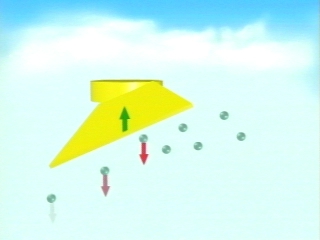A helicopter is a fascinating object, it does not have the wings of an airplane, nor does it have some obvious source of forward thrust. Yet it is still capable of flight. How is this? With an airplane the wings provide the lift by causing a low pressure system to form on the wings, which in turn causes to airplane to rise. On a helicopter the rotors take the place of the fixed wing, although some helicopters do have fixed "wings", these are only for storage, not for lift. The angle of the wings also has a large part to play in the amount of lift that an airplane has. A helicopter's rotors are adjustable, that is the angle or pitch, can be changed. An increase in the pitch will cause the rotors to have more lift, and that will in turn cause the helicopter to rise. In most helicopters, both the pitch and the throttle are connected in what is called the collective pitch stick. When this stick is pulled back, the helicopter begins its ascent.
To achieve forward motion in an airplane you must increase the rpms of the propeller or jet. However in a helicopter, there is no propeller or jet to give the helicopter its forward thrust. This is solved by causing the main rotor to tilt on its shaft (the shaft itself does not tilt) in the direction the pilot wants to go. If the rotor is tilted at an angle, that means that the pitch of all of the rotors will be off, so this is solved by having a device called an automatic cyclic pitch stick

courtesy of www.physics.montana.edu
courtesy of www.anglefire.com/mi3/gmpr
